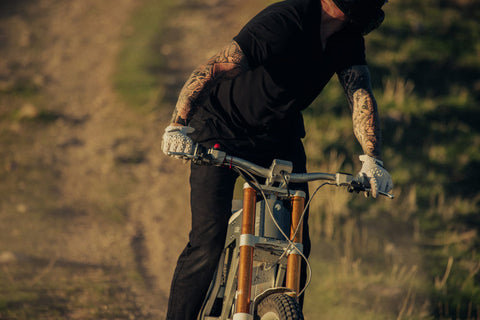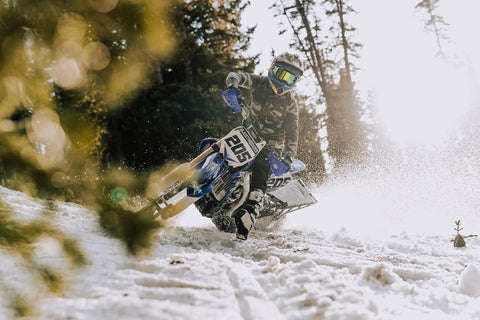
How to Safely Handle Motorcycle Skidding
Skidding is something that every rider has to deal with, regardless of experience level. While it can seem like something out of your control, a good rider can sometimes regain traction from a skid without even going down.
So how do you deal with skidding and avoid doing it in the first place? Read on and find out.
What is Motorcycle Skidding?

A skid is basically when tires lose traction with the road surface. The bike is no longer going on its intended course and the effectiveness of the brakes is drastically reduced. So pretty much when shit hits the fan. Here are a few types of skids:
Rear Wheel Skid
This is when the rear wheel loses traction while braking or accelerating. This can result in the rear end of the motorcycle sliding out to the side.
Front Wheel Skid
This is when the front wheel loses traction. These are particularly dangerous because the rider can lose control and potentially crash.
Straight Skid
Straight skids are when the bike keeps moving forward in a straight line, but the wheels aren't rotating and have no grip on the road. This can cause a loss of balance and stability, making the bike hard to control.
The Slide
During a slide, the bike might keep moving forward in its intended direction or sideways, depending on the circumstances.
Causes of Skidding
Skidding be caused by a number of situations including:
-
Wet or slippery roads from rain, snow, or ice
-
Excessive braking or braking too quickly
-
Excessive acceleration
-
Leaning too much on corners, causing the bike to lose traction
-
Suddenly changing direction
READ MORE: CAN YOU RIDE MOTORCYCLES IN THE RAIN?
READ MORE: MOTORCYCLE LEAN ANGLE: HOW LOW CAN YOU GO?
Steps to Control a Motorcycle Skid
Keep calm
Relax and stay in control. It might seem like you're screwed, but there's plenty of time to adjust.
Look where you want to go
Focus on where you want to go and ignore other vehicles. This will help direct the bike with subtle body movements.
Steer in the direction of the skid
Steering into the skid will help you regain traction, just like with a car.
Engage the brakes without using the clutch
Instead of using the clutch, slow down by using engine braking. You can shift down a gear to decrease the bike's speed, which might feel a bit jerky.
Adjust your body weight
Try putting more weight on the rear wheel to reduce the skid. If you slide forward, it may cause you to lose control.
FAQs

Why do motorcycles skid?
Why do motorcycles skid anyway? It can be for a number of reasons. Excessive acceleration can cause the rear tire to spin, while excessive braking can lock one or both tyres up.
Avoid changing direction suddenly, because this can also cause a skid. Lastly, leaning too deep into a corner can make your tires lose traction. The good news is that skids can be avoided (as much as possible) by being aware of the causes.
How do you skid in the gear cycle?
Skidding while downshifting is something every rider needs to look out for, but how do you skid in the gear cycle in the first place?
When you shift down you need to open the throttle slightly to increase engine speed. If you don’t apply enough throttle, the bike will lurch when you release the clutch. Shifting down without matching the engine's speed with the bike's speed can cause the rear wheel to skid.
READ MORE: WHEN TO SHIFT GEARS AT WHAT RPM?
What does a motorcycle skid plate do?
You might have heard of skid plates, but what does a motorcycle skid plate do anyway? The skid plate, also known as an engine guard or bash plate, is a protective component that's usually mounted on the underside of a motorcycle's frame.
The skid plate’s job is to provide an additional layer of protection to the engine and acts as a barrier against things like rocks and debris while riding on uneven surfaces. It prevents objects from hitting things like the engine, oil pan, exhaust headers, or other sensitive components.
